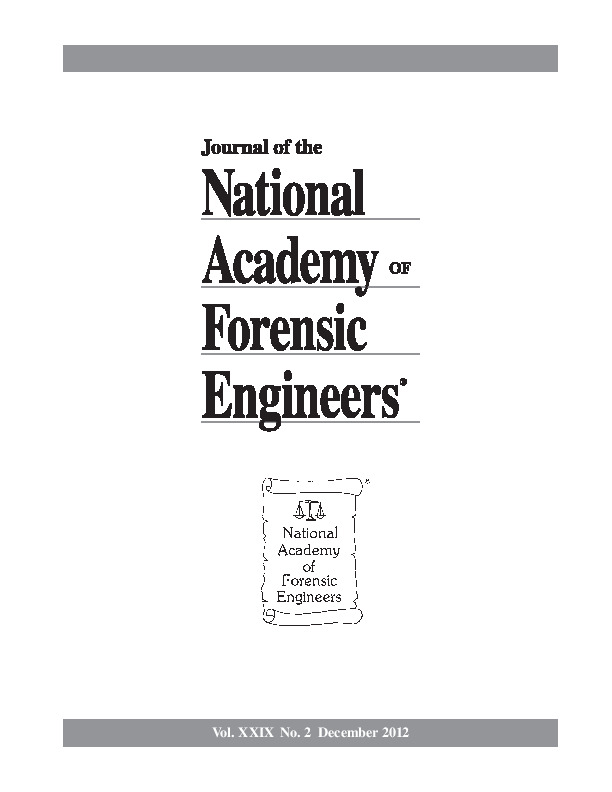Forensic Engineering Evaluation Of Co2 Re-Breathing In Infant Bedding Materials
DOI:
https://doi.org/10.51501/jotnafe.v29i2.771Keywords:
Carbon dioxide, re-breathing, rebreathing, SIDS, Sudden Infant Death SyndromeAbstract
A Four-Month-Old Infant Suffocated In His Sleep From Positional Asphyxia. The Baby Was Found Face Down On A Foam Wedge Pillow Called A Sleep Positioner. The Author Was Engaged To Evaluate The Sleep Positioner Product For Its Potential To Cause Carbon Dioxide (Co2) Re-Breathing In Infants. Prior Research On This Subject Had Already Established A Reliable Method Of Simulating Infant Breathing And Measurement Of Respiratory Gas Constituents Using A Mechanical Breathing Model. Guided By This Research, A Mechanical Breathing Model And Gas Sampling Apparatus Was Coupled To A Mannequin Representing The Child In This Matter. The Mannequin Was Placed In Face-Down And Sidefacing Positions On The Sleep Positioner Product And Twelve Other Surfaces, Including A Plain Cotton Sheet As The Baseline. The Sleep Positioner Product Produced The Highest (And Most Dangerous) Level Of Co2 Re-Breathing, More Than Three Times The Baseline Level. Factors Contributing To Co2 Re-Breathing Are Discussed.Downloads
Published
2012-01-01
How to Cite
Leshner, Michael D. 2012. “Forensic Engineering Evaluation Of Co2 Re-Breathing In Infant Bedding Materials”. Journal of the National Academy of Forensic Engineers 29 (2). https://doi.org/10.51501/jotnafe.v29i2.771.
Issue
Section
Articles
License
Copyright (c) 2012 National Academy of Forensic Engineers

This work is licensed under a Creative Commons Attribution-NoDerivatives 4.0 International License.
All rights © Journal of the National Academy of Forensic Engineers.
Full statement regarding the author's license of copyright to the NAFE is shown on the Copyright section of the Submissions Page.






